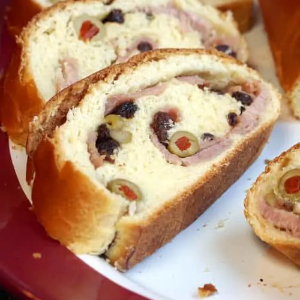Christian believers everywhere traditionally hold extended-family, festive feasts on December 25 to honour the principal prophet of their faith system. What’s traditional to eat at Christmas is not always that clear-cut. It all depends on your culture and traditions…
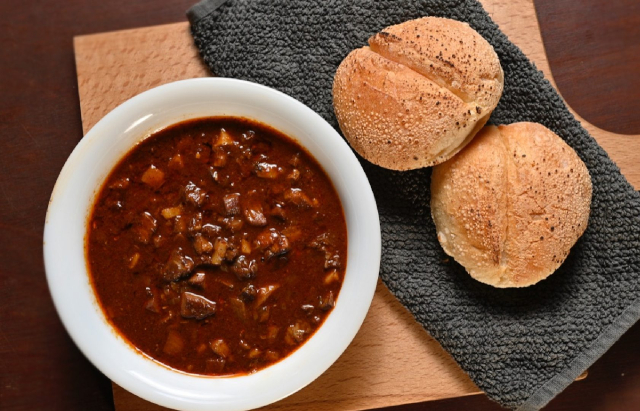 Sorpotel: A Goan Stew particularly favoured at Christmas. Also a seasonal
Sorpotel: A Goan Stew particularly favoured at Christmas. Also a seasonal
fave in the Philippines, where Portuguese cultural influences are stong.
Clerics, scholars and historians pretty much universally think of Christmas Dinner as a chance to celebrate the birth of Christ. Mist lay people – whether church-goers or not – tend to think of the big feast with a chance to get together with all their closest family members and friends to celebrate and reaffirm their Christian values and the tenets of their faith.
Now, I’ve never personally known any clan where the pater familias actually stands and toasts The Prophet with red wine and a shard of flatbread. But I’m assure there families in which that happens. I have no problem with that, if it’s your tradition.
However you do it, the breaking of bread is pretty much a universal symbolic gesture of all Christmas suppers. Sharing around the table any main dish is usually sufficient to ‘fulfill the promise’. It might not even be bread. But in many corners of the world, they have evolved Christmas feast traditions very different from ours.
And it all started with non-Christians…
A note on timing…
While researching this topic, I discovered that Europeans and those thereof descended are probably in an overall minority compared to Christians who celebrate differently. I.e.- the majority of cultures I encountered actually hold their big family suppers the night before Christmas. Many of those actually serve their celebratory feast at or just after midnight, early on Christmas morning.
Whenever you feast, do it with dignity, give thanks for your faith and family, and by all means enjoy your cultures most special; culinary delights…
A small sample of centrepiece Christmas feast dishes
Poland
In Poland, the Christmas Eve feast traditionally begins when the first star appears in the sky. Christmas Eve dinner begins when the first star appears in the night sky.
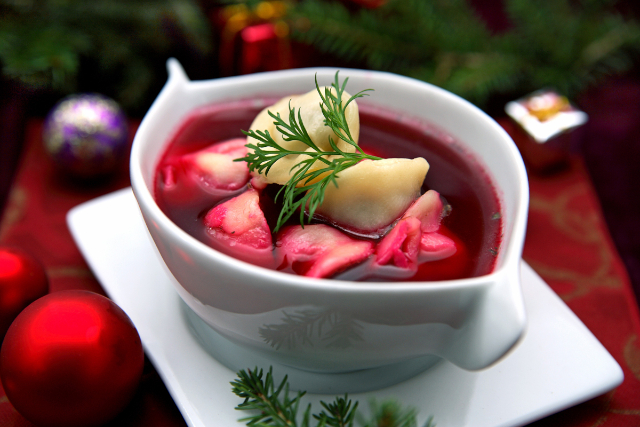
The 12-dish feast traditionally includes carp, pierogi (filled dumplings) and a selection of fruit and poppy seed desserts, and begins with a special beetroot soup, barszcz – or Polish borscht.
Phillippines
Eaten for breakfast after Misa de Gallo (Midnight Mass) on Christmas Eve, bibingka is a doughy rice-flour cake incorporating coconut milk, butter and eggs. There are many variations – from plain to downright luxurious. It’s traditionally baked in clay pots lined with banana leaves. But you can prepare it in any cake pan you happen to have! Though a Philippine favourite you can also find it during the festive season in Goa, the former Portuguese enclave on the west coast of the Indian subcontinent.
Ethiopia
The prevailing purveyor of Christian religion in Ethiopia is the Eastern Orthodox Church. As such, their traditions surrounding Christmas are somewhat different than their European counterparts. The holiday season consists of a 43-day fast that begins on 25 November and ends on Ganna, or Christmas Day, on January 7.
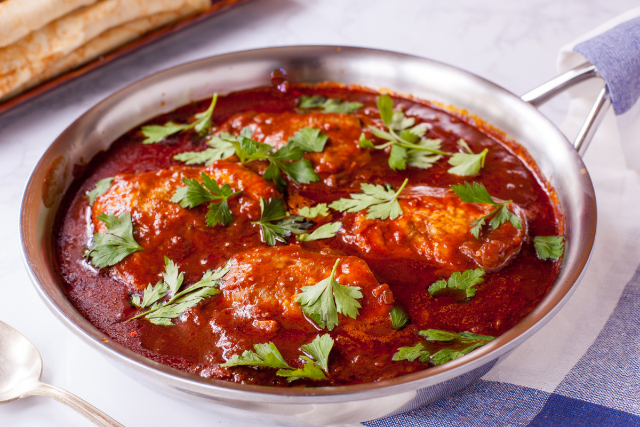
The national dish, rooster doro wat, a hot, spicy chicken stew with hard-boiled eggs, is traditionally consumed by all.
Goa
An important part of Goa’s Christmas Eve celebrations, sorpotel, is a spicy stew. It’s pork (traditionally including the liver and heart) slow-cooked in cinnamon, cumin and kashmiri chillies. Sana, coconut liqueur-infused rice cakes, are considered the ideal go-with in Goa. Just one course of the endless festive grub at the big meal.
Spain
In Catalonia, Spain, an elaborate spread is traditionally laid out for Christmas Lunch. It begins with a very special soup, sopa de galets, which features beef-and-pork meatballs and very large pasta shells, or galets. One source I found describes the making of sopa de galets as ‘a labour of love’.
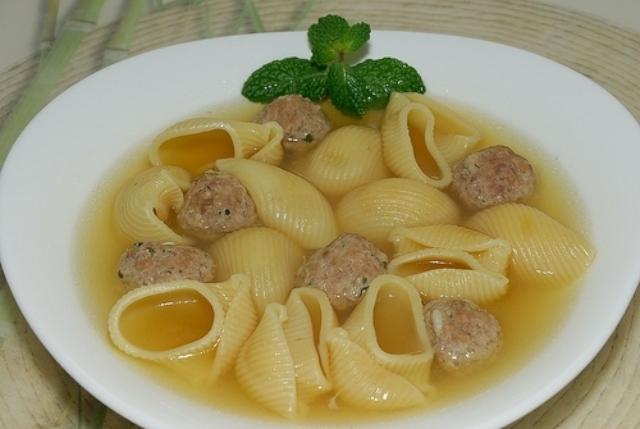
The broth takes hours of simmering and a long list of ingredients. Made from a mixture of beef and ham bones, chicken breast, pig’s trotters and vegetables. The meatballs and pasta shells are added toward the end. Serve when they are fully cooked.
Venezuela
Pan de jamón is a sweet-savoury bread is traditionally served on Christmas Eve, although it’s often available in bakeries throughout December (See photo, top of page.). It is sometimes made with filo pastry (a more modern version) Pan de jamón is a meal in itself, traditionally filled with roasted ham, raisins and green olives. It’s often accompanied by hallacas (boiled corn dough stuffed with meat). think of tamales but with capers, olives, and raisins added.
Fascinating…
Just start by Googling, “Christmas dinner in non-European cultures” and see what you get… You’ll be able to click around the rest of the day oblivious to the time or what’s going on around you!
~ Maggie J.

